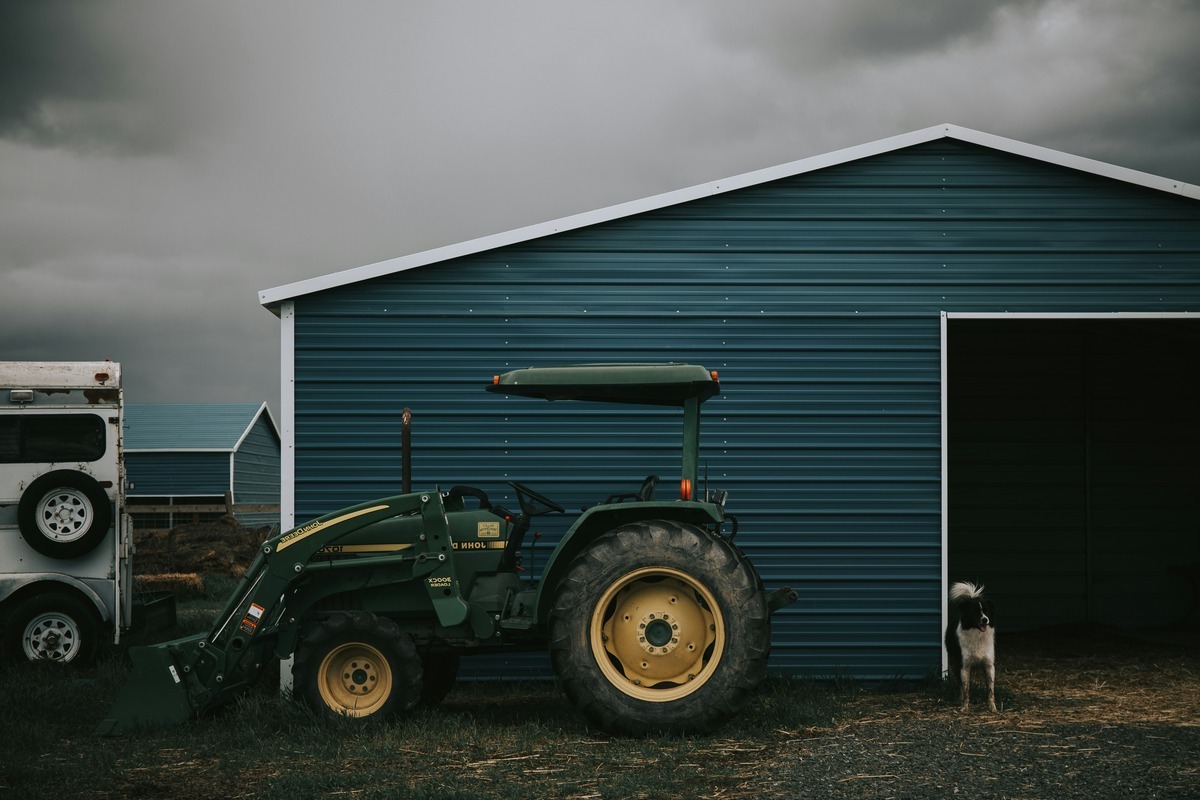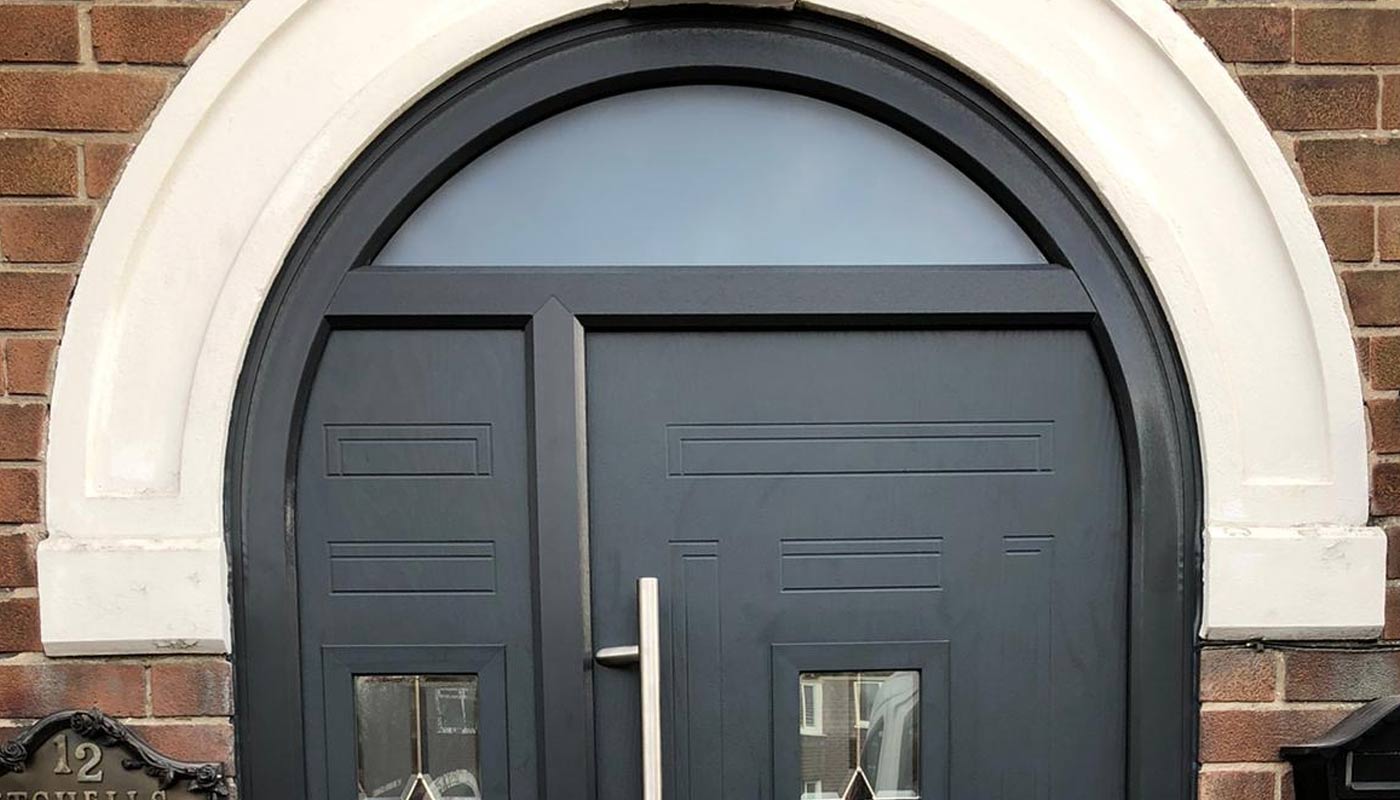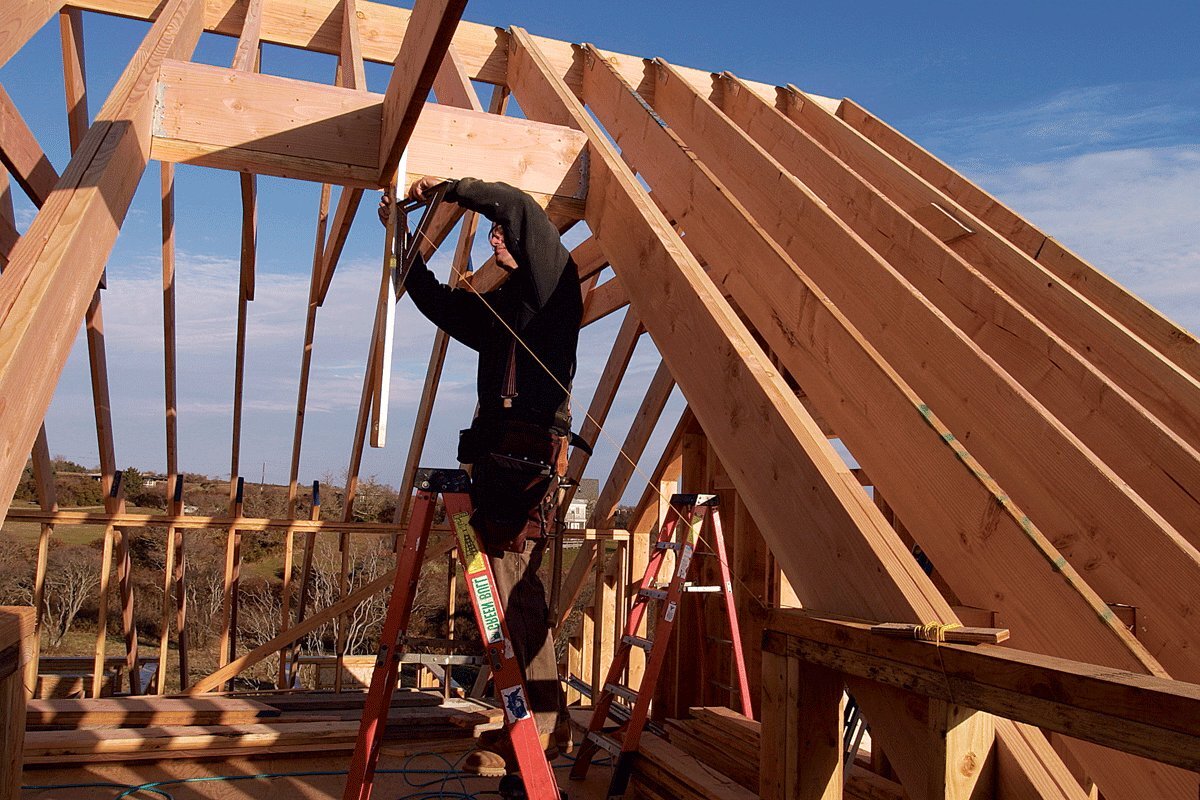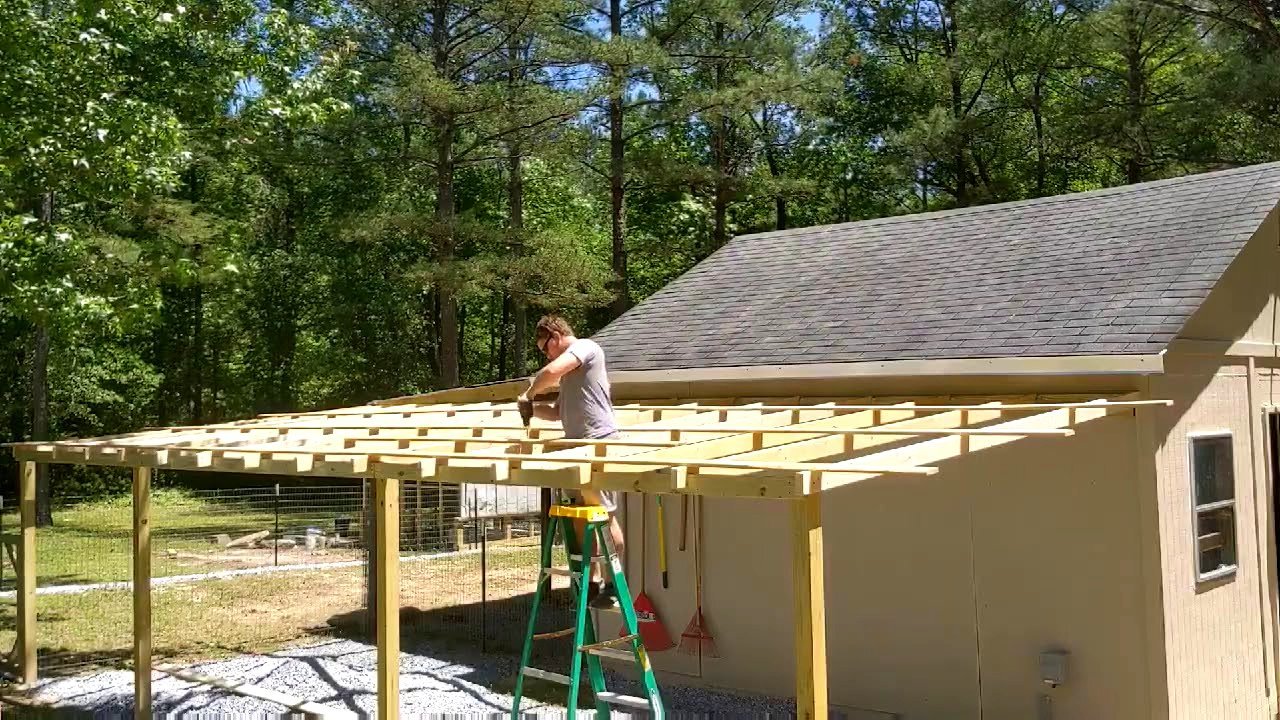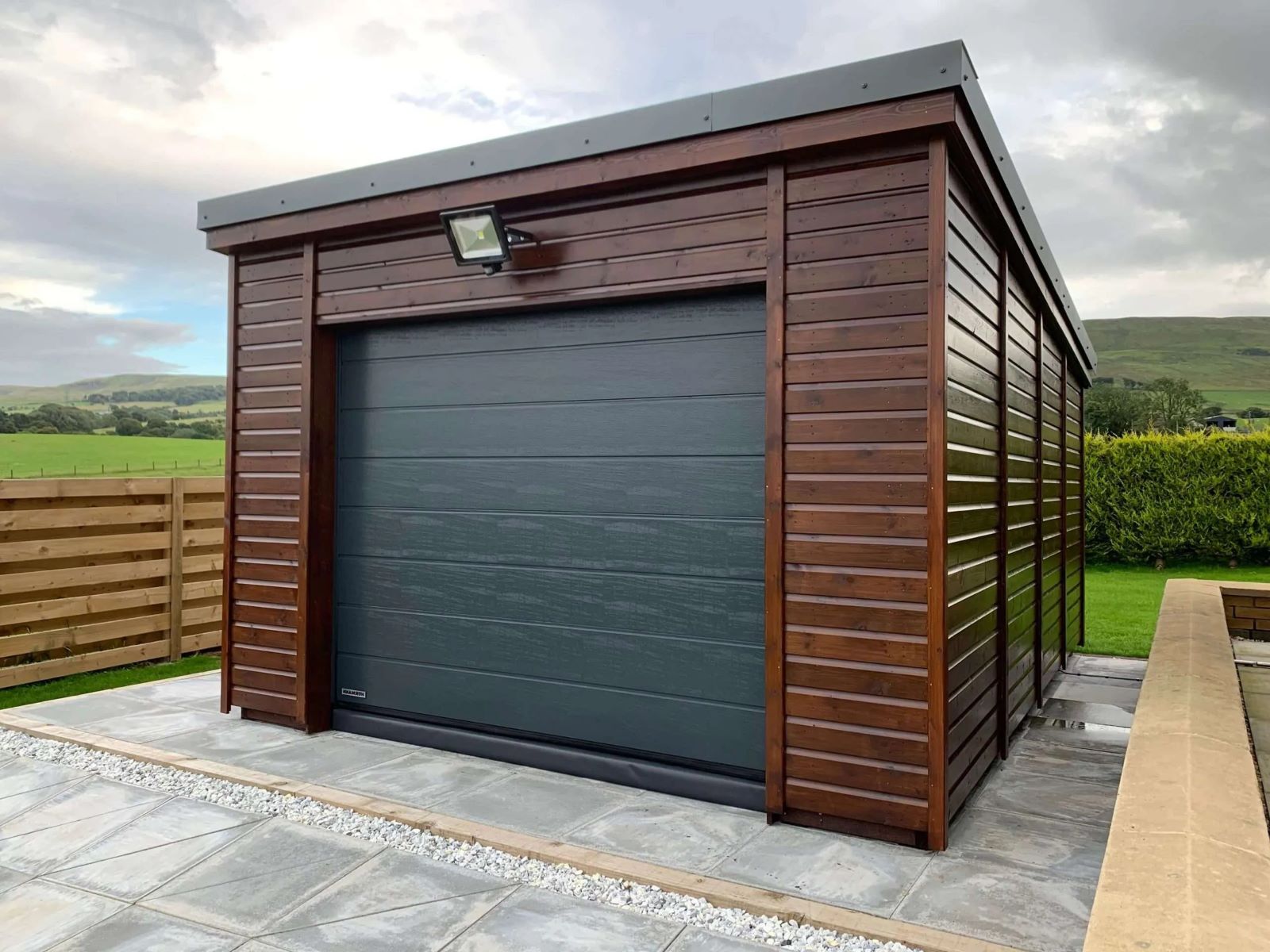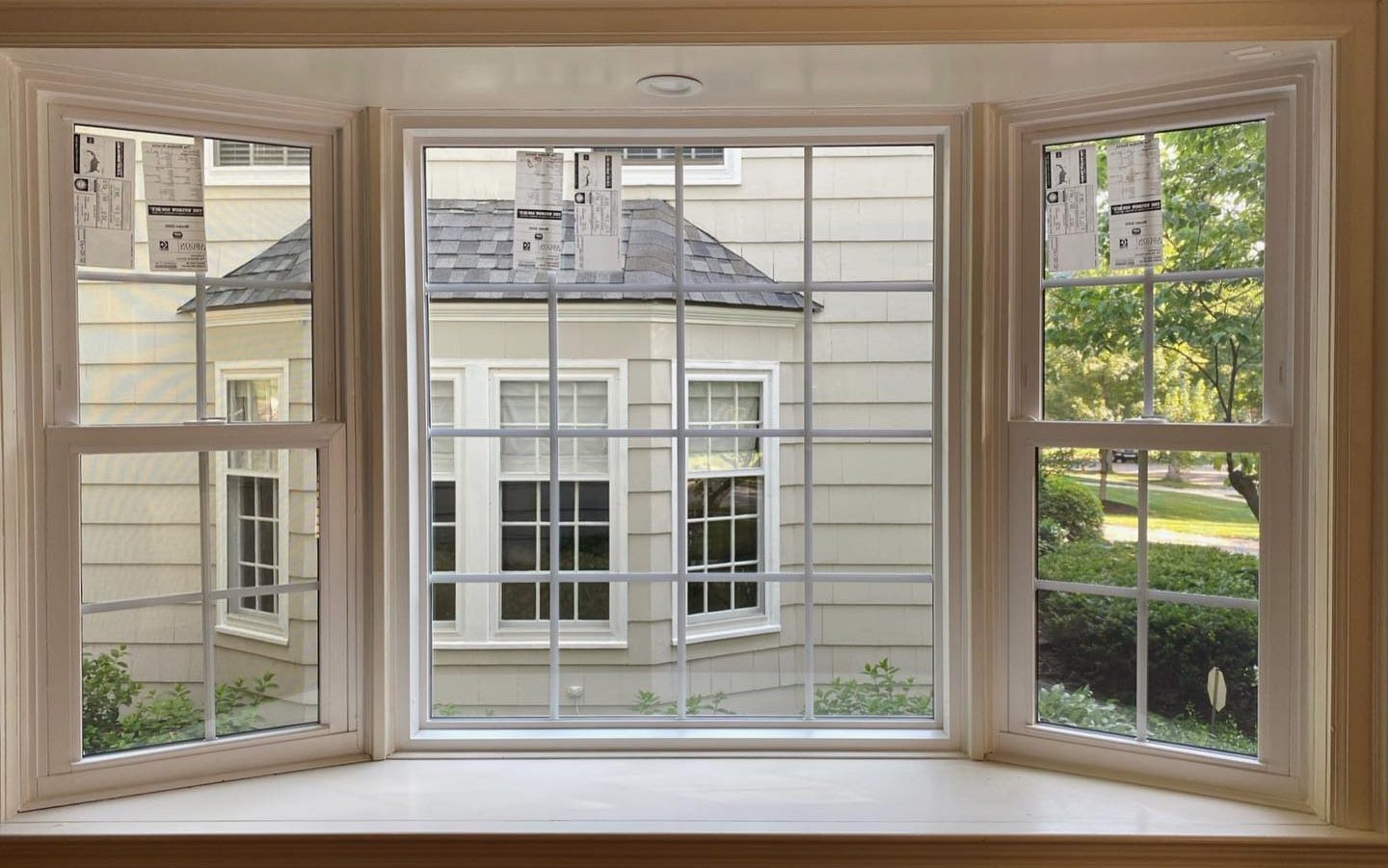Home>Create & Decorate>DIY & Crafts>Timber Frame Shed: A DIY Guide To Building Your Own
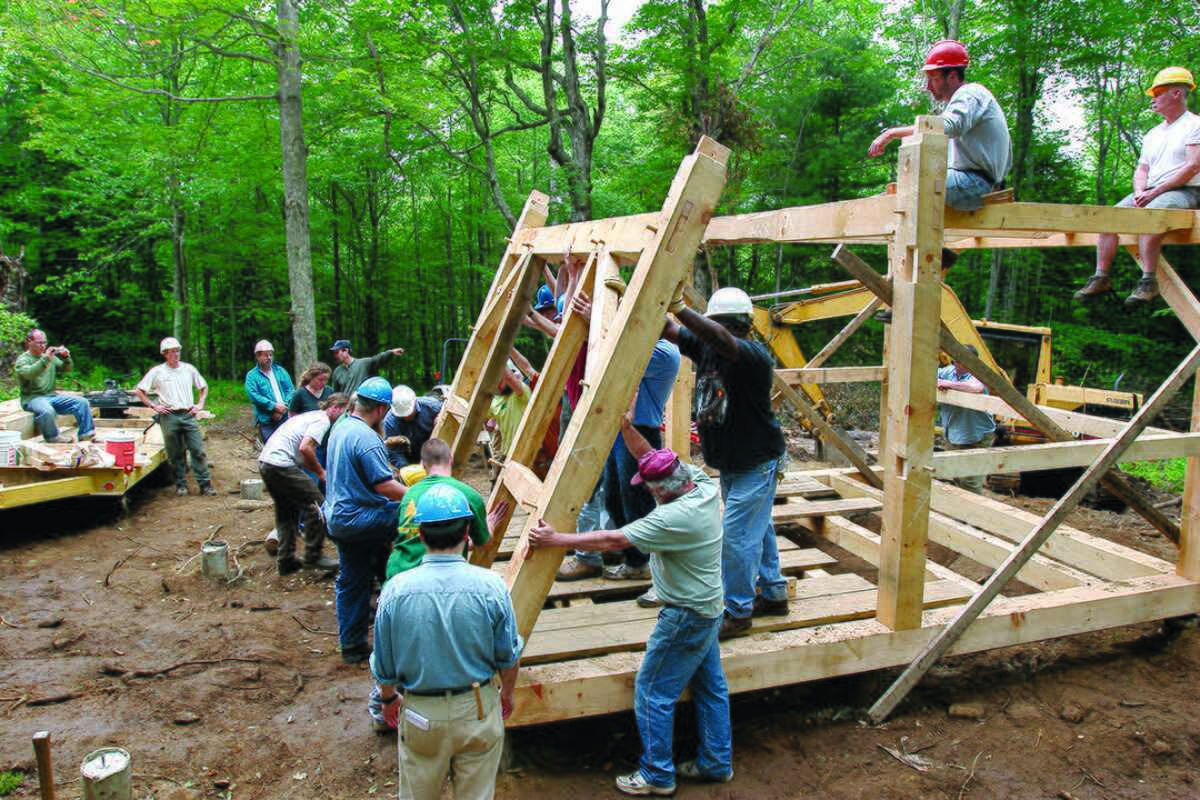

DIY & Crafts
Timber Frame Shed: A DIY Guide To Building Your Own
Published: February 22, 2024

Senior Editor in Create & Decorate, Kathryn combines traditional craftsmanship with contemporary trends. Her background in textile design and commitment to sustainable crafts inspire both content and community.
Learn how to build your own timber frame shed with our comprehensive DIY guide. Perfect for DIY & Crafts enthusiasts looking for a rewarding project.
(Many of the links in this article redirect to a specific reviewed product. Your purchase of these products through affiliate links helps to generate commission for Twigandthistle.com, at no extra cost. Learn more)
Introduction
Embarking on the journey of building your own timber frame shed is a rewarding and fulfilling endeavor. Whether you're a seasoned DIY enthusiast or a novice looking to dive into the world of woodworking, constructing a timber frame shed offers a unique blend of practicality, craftsmanship, and creativity. This comprehensive guide will walk you through the step-by-step process of creating a sturdy and visually appealing timber frame shed that will stand the test of time.
Building a timber frame shed is more than just a construction project; it's an opportunity to connect with the timeless art of woodworking and craftsmanship. The process involves understanding the principles of timber frame construction, meticulously planning and designing the layout, gathering the necessary materials and tools, and bringing everything together to create a functional and aesthetically pleasing structure.
Throughout this guide, you'll discover the intricate details of timber frame construction, from selecting the right timber and joinery techniques to erecting the frame and adding the finishing touches. Each phase of the project presents its own set of challenges and rewards, making the entire journey a truly enriching experience.
By the end of this guide, you'll not only have a beautiful timber frame shed to show for your efforts but also a newfound appreciation for the art of woodworking and the satisfaction of creating something with your own hands. So, roll up your sleeves, gather your tools, and let's embark on this exciting journey of building a timber frame shed that will become a cherished addition to your property.
Read more: How To Build Timber Steps On A Slope
Chapter 1: Understanding Timber Frame Construction
Timber frame construction is a traditional building method that has stood the test of time, dating back centuries. It involves crafting a structural framework using large, heavy timber pieces, which are joined together using traditional woodworking joinery techniques. This method of construction offers a timeless appeal, combining strength, durability, and aesthetic beauty.
At the core of timber frame construction is the use of wooden timbers as the primary structural support for the building. These timbers are carefully selected for their strength and durability, often sourced from high-quality wood species such as oak, cedar, or Douglas fir. The inherent strength of these timbers allows for the creation of open, spacious interiors without the need for interior load-bearing walls, providing a sense of grandeur and flexibility in design.
Joinery techniques play a pivotal role in timber frame construction, as they determine the structural integrity and visual appeal of the frame. Traditional joinery methods such as mortise and tenon, dovetail, and scarf joints are employed to securely connect the timber pieces, ensuring a robust and enduring framework. These joints are crafted with precision, often without the use of metal fasteners, showcasing the artistry and craftsmanship inherent in timber frame construction.
Understanding the principles of timber frame construction involves delving into the nuances of load-bearing capabilities, bracing techniques, and the integration of modern building codes and standards. While the traditional methods remain at the heart of timber frame construction, contemporary advancements in engineering and construction technology have enhanced the efficiency and structural performance of timber frame buildings.
Furthermore, embracing the sustainable nature of timber as a building material is an integral part of understanding timber frame construction. Wood is a renewable resource that sequesters carbon, making it an environmentally friendly choice for construction. Timber frame construction allows for the creation of energy-efficient buildings with natural insulation properties, contributing to a greener and more sustainable approach to construction.
In essence, understanding timber frame construction goes beyond the technical aspects; it encompasses a deep appreciation for the heritage, craftsmanship, and sustainability inherent in this time-honored building method. As we delve into the subsequent chapters, we will further explore the intricacies of planning, designing, and constructing a timber frame shed, embracing the rich tradition and artistry that define this remarkable construction technique.
Chapter 2: Planning and Designing Your Shed
The planning and design phase of building a timber frame shed is a critical foundation for the entire project. It sets the stage for the structural integrity, functionality, and visual appeal of the shed. During this phase, careful consideration must be given to the layout, dimensions, and architectural details to ensure a well-executed and aesthetically pleasing end result.
Assessing Your Needs
Before diving into the specifics of the shed's design, it's essential to assess your needs and intended use for the structure. Are you planning to use the shed for storage, as a workshop, or perhaps as a cozy retreat space? Understanding the primary purpose of the shed will guide the design process and influence decisions regarding size, layout, and interior features.
Designing the Layout
Once the intended use is established, designing the layout of the shed comes into focus. Consider the optimal placement of doors, windows, and any additional features based on the shed's purpose. The layout should also account for efficient utilization of space while allowing for smooth workflow and accessibility.
Selecting Timber and Joinery
Choosing the right timber species and joinery techniques is a pivotal aspect of the design phase. The type of wood selected will impact the shed's aesthetic appeal, structural strength, and long-term durability. Additionally, the selection of joinery methods, such as mortise and tenon or dovetail joints, contributes to the overall character and stability of the timber frame.
Incorporating Architectural Details
Architectural details, such as roof pitch, overhangs, and decorative elements, play a significant role in defining the shed's visual appeal. These details not only add charm and character but also contribute to the shed's functionality and weather resistance. Thoughtful incorporation of architectural details enhances the overall design and elevates the shed from a simple structure to a captivating architectural feature.
Adhering to Building Codes
Throughout the planning and design process, it's crucial to adhere to local building codes and regulations. Ensuring compliance with relevant codes guarantees the safety, structural integrity, and legal conformity of the timber frame shed. This may involve obtaining necessary permits and consulting with local authorities to ensure that the design aligns with all applicable standards.
The planning and design phase sets the stage for a successful timber frame shed construction, laying the groundwork for a well-crafted, functional, and visually appealing structure. By meticulously considering the intended use, layout, timber selection, joinery techniques, architectural details, and regulatory requirements, you pave the way for a seamless transition into the construction phase, where the vision of your timber frame shed begins to take shape.
Chapter 3: Gathering Materials and Tools
Gathering the necessary materials and tools is a pivotal step in the journey of building a timber frame shed. This phase requires meticulous planning and attention to detail to ensure that you have everything needed to bring your vision to life. From selecting high-quality timber to acquiring specialized woodworking tools, each component plays a crucial role in the construction process.
Read more: How to Build a DIY Window Frame
Selecting Timber
The selection of timber is a foundational aspect of building a timber frame shed. Opting for high-quality, durable wood species is essential to ensure the longevity and structural integrity of the shed. Common choices include oak, cedar, Douglas fir, and hemlock, each offering distinct characteristics in terms of strength, grain pattern, and natural resistance to decay. Carefully inspecting and sourcing the timber from reputable suppliers is paramount to obtaining materials that meet the standards of traditional timber frame construction.
Acquiring Joinery Tools
Traditional joinery techniques are integral to timber frame construction, necessitating the use of specialized woodworking tools. Essential tools include chisels, mallets, hand saws, and mortising machines, each tailored to the precise and intricate nature of crafting traditional joinery joints. Investing in high-quality tools that align with the chosen joinery methods is crucial for achieving precise and seamless connections between timber pieces.
Obtaining Additional Materials
In addition to timber and joinery tools, various supplementary materials are required to complete the timber frame shed. This may encompass fasteners, such as wooden pegs or metal connectors, which play a role in securing the joinery joints. Furthermore, roofing materials, siding options, and insulation components should be considered based on the shed's design and intended use. Attention to detail in selecting these materials contributes to the overall functionality, weather resistance, and aesthetic appeal of the completed structure.
Embracing Sustainability
Embracing sustainability in the selection of materials is a commendable approach when building a timber frame shed. Opting for responsibly sourced timber from managed forests and choosing eco-friendly treatment options aligns with the principles of environmental stewardship. Additionally, exploring reclaimed or salvaged timber for certain components adds a unique character to the shed while reducing the environmental impact of the construction process.
Read more: How to Build DIY Door Casing
Preparing the Workspace
Preparing a dedicated workspace for processing and assembling the timber is essential for an organized and efficient construction process. This may involve setting up a workshop equipped with workbenches, sawhorses, and adequate lighting to facilitate the handling and preparation of the timber components. A well-organized workspace contributes to a smooth and systematic approach to the construction phase.
Gathering materials and tools marks the transition from planning to execution, laying the groundwork for the hands-on craftsmanship and construction that define the art of building a timber frame shed. With a comprehensive array of high-quality materials and specialized tools at your disposal, you are poised to embark on the next phase of the journey, where the timber frame begins to take shape, embodying the timeless tradition and artistry of timber frame construction.
Chapter 4: Building the Foundation
The foundation of a timber frame shed is a critical element that provides stability, support, and longevity to the entire structure. Building a solid foundation involves meticulous planning, precise execution, and a thorough understanding of the site conditions. The foundation serves as the anchor for the timber frame, ensuring that the shed remains structurally sound and resilient against environmental factors.
Site Preparation
Before commencing the foundation construction, thorough site preparation is essential. This involves clearing the area of any debris, vegetation, and uneven terrain. The site should be leveled and properly graded to ensure a uniform base for the foundation. Additionally, assessing the soil composition and drainage patterns is crucial to address any potential issues that may affect the stability of the foundation.
Foundation Types
Several foundation options are suitable for timber frame sheds, including concrete slab, concrete piers, and concrete footings. The choice of foundation type depends on factors such as soil conditions, local building codes, and the intended use of the shed. Each foundation type offers distinct advantages in terms of load-bearing capacity, resistance to moisture, and ease of construction, allowing for flexibility based on specific project requirements.
Constructing the Foundation
The construction of the foundation begins with marking the layout based on the shed's dimensions and design. For a concrete slab foundation, excavation is carried out to the required depth, followed by the installation of formwork to contain the concrete. In the case of concrete piers or footings, precise placement and alignment are crucial to ensure uniform support for the timber frame.
Ensuring Level and Square
Maintaining precise levels and squareness during the foundation construction is paramount. Accurate measurements and alignment of the foundation components lay the groundwork for a well-balanced and structurally sound timber frame shed. Utilizing string lines, spirit levels, and square tools facilitates the achievement of precise dimensions and alignments, contributing to the overall integrity of the foundation.
Incorporating Anchoring Systems
Incorporating anchoring systems into the foundation is essential to secure the timber frame shed against uplift forces, especially in regions prone to high winds or seismic activity. Anchor bolts or straps are embedded into the concrete foundation during the pouring process, providing a robust connection point for securing the timber frame components.
Allowing for Curing and Settling
Upon completion of the foundation construction, allowing adequate time for the concrete to cure and the foundation to settle is crucial before proceeding with the timber frame assembly. This period ensures that the foundation achieves its full strength and stability, setting the stage for the seamless integration of the timber frame components.
Building the foundation sets the stage for the subsequent phases of timber frame construction, laying a solid groundwork for the assembly of the timber frame and the completion of the shed. With a well-constructed foundation in place, the structural integrity and longevity of the timber frame shed are upheld, embodying the meticulous craftsmanship and attention to detail that define the art of timber frame construction.
Chapter 5: Constructing the Timber Frame
Constructing the timber frame is a pivotal phase in the journey of building a timber frame shed, marking the transition from groundwork to the tangible manifestation of the structure. This phase embodies the timeless artistry and precision of traditional woodworking, where carefully selected timber pieces are transformed into a robust and visually striking framework.
The process begins with the meticulous preparation of the timber components, including layout marking, precise measurements, and the crafting of traditional joinery. Each timber piece is carefully inspected and processed to ensure a seamless fit and structural integrity. Traditional joinery techniques, such as mortise and tenon or dovetail joints, are meticulously crafted, showcasing the artistry and craftsmanship inherent in timber frame construction.
As the timber frame takes shape, the assembly process unfolds with a harmonious blend of precision and teamwork. Each timber piece is methodically positioned and secured, with careful attention to alignment, levelness, and the integration of bracing elements. The collaborative effort of assembling the timber frame reflects the time-honored tradition of communal craftsmanship, where each joint and connection embodies the collective dedication to creating a lasting structure.
Throughout the assembly process, the structural integrity and stability of the timber frame are upheld through meticulous checks and adjustments. Stringent adherence to squareness, plumbness, and alignment ensures that the frame stands true and steadfast, embodying the timeless principles of craftsmanship and precision.
The construction of the timber frame is not merely a mechanical process; it is a symphony of skill, tradition, and artistry. The rhythmic sound of mallets meeting chisels, the aroma of freshly worked wood, and the sight of the frame taking shape evoke a profound connection to the heritage and craftsmanship of timber frame construction.
As the final pieces of the timber frame are secured, a sense of accomplishment and reverence permeates the air, marking the culmination of a labor-intensive yet deeply gratifying phase. The completed timber frame stands as a testament to the enduring legacy of traditional woodworking, embodying strength, beauty, and the timeless allure of timber frame construction.
Chapter 6: Adding Roofing and Siding
With the timber frame standing proudly, the focus shifts to the pivotal elements that will safeguard the shed from the elements and elevate its aesthetic appeal: roofing and siding. The careful selection and installation of these components are essential to ensure the shed's durability, weather resistance, and visual allure.
Roofing Selection
Choosing the right roofing material is a crucial decision that impacts both the shed's functionality and its overall aesthetic. Options range from traditional cedar shingles, which exude rustic charm and natural durability, to metal roofing, prized for its longevity and low maintenance. Each material offers distinct advantages in terms of weather resistance, insulation properties, and architectural style, allowing for a tailored approach based on the shed's design and environmental considerations.
Siding Installation
The siding serves as the protective skin of the shed, shielding the timber frame from moisture, wind, and other external elements. Whether opting for classic wooden clapboard, durable fiber cement panels, or low-maintenance vinyl siding, the installation process demands precision and attention to detail. Properly installed siding not only enhances the shed's resilience but also contributes to its visual appeal, adding character and texture to the exterior.
Read more: How to Build Aluminum Storm Window Frames
Weatherproofing and Insulation
Incorporating effective weatherproofing measures during the installation of roofing and siding is paramount to ensure a snug and resilient structure. Proper flashing, underlayment, and sealing techniques safeguard against water infiltration, while insulation materials contribute to energy efficiency and interior comfort. The seamless integration of these elements fortifies the shed against the rigors of the elements, creating a secure and comfortable interior environment.
Architectural Flourishes
Beyond their functional roles, roofing and siding present opportunities to infuse architectural character into the shed. Gable overhangs, decorative trim, and complementary color schemes accentuate the shed's visual appeal, harmonizing with the surrounding landscape and architectural context. Thoughtful attention to these details elevates the shed from a mere structure to a captivating architectural feature that reflects craftsmanship and attention to detail.
Completion and Protection
As the roofing and siding installation nears completion, a sense of accomplishment permeates the air. The shed begins to embody its envisioned form, exuding strength, beauty, and a timeless allure. With the final touches in place, such as trim work and gutter installation, the shed stands as a testament to the meticulous craftsmanship and dedication poured into every phase of its construction.
The addition of roofing and siding marks a transformative phase, where the timber frame shed evolves into a fully realized structure, poised to endure the passage of time with grace and resilience. The careful selection, installation, and finishing touches applied to the roofing and siding encapsulate the essence of craftsmanship and attention to detail, culminating in a timber frame shed that embodies both practicality and timeless beauty.
Chapter 7: Finishing Touches and Maintenance
As the timber frame shed nears completion, attention turns to the finishing touches that will enhance its functionality, visual appeal, and long-term durability. This phase encompasses a range of meticulous details, from interior finishes to exterior treatments, culminating in a structure that exudes craftsmanship and timeless allure.
Interior Finishes
The interior of the timber frame shed presents an opportunity to infuse warmth and character into the space. Considerations such as interior wall treatments, flooring options, and lighting fixtures contribute to creating a welcoming and functional environment. Whether opting for natural wood finishes that accentuate the beauty of the timber frame or incorporating practical elements such as storage solutions and workbenches, the interior finishes add depth and personality to the shed.
Protective Treatments
Applying protective treatments to the timber frame and exterior surfaces is essential to safeguard the shed against the elements. This may involve the application of wood preservatives, sealants, or exterior finishes that enhance the natural beauty of the timber while providing resistance to moisture, UV exposure, and insect damage. Thoughtful application of these treatments prolongs the lifespan of the shed and preserves its aesthetic appeal.
Functional Additions
Incorporating functional additions, such as doors, windows, and ventilation systems, enhances the usability and comfort of the timber frame shed. Well-crafted doors and windows not only contribute to the shed's architectural charm but also facilitate natural light and airflow. Additionally, the integration of effective ventilation systems ensures a comfortable and well-ventilated interior environment, contributing to the shed's overall functionality.
Maintenance Considerations
Establishing a maintenance plan is crucial to ensure the longevity and pristine condition of the timber frame shed. This may involve periodic inspections, cleaning routines, and proactive measures to address any signs of wear or deterioration. Regular maintenance preserves the structural integrity and visual appeal of the shed, allowing it to age gracefully while retaining its inherent charm.
Landscaping and Integration
The final phase of finishing touches involves integrating the timber frame shed harmoniously into its surroundings. Thoughtful landscaping, pathways, and exterior lighting accentuate the shed's presence, creating a cohesive connection with the surrounding environment. This integration not only enhances the shed's visual impact but also fosters a sense of unity between the structure and its natural setting.
The culmination of finishing touches and maintenance encapsulates the culmination of craftsmanship, attention to detail, and a deep appreciation for the enduring legacy of timber frame construction. As the timber frame shed stands as a testament to the meticulous dedication poured into every phase of its construction, it embodies both practicality and timeless beauty, ready to serve its purpose for generations to come.
Conclusion
Embarking on the journey of building a timber frame shed is a testament to the enduring allure of craftsmanship, tradition, and the timeless art of woodworking. From the initial stages of planning and design to the meticulous construction of the timber frame, roofing, and siding, every phase of the process embodies a harmonious blend of practicality and artistry. As the finishing touches are applied and the shed begins to stand as a fully realized structure, it serves as a testament to the dedication and passion poured into every detail.
The completion of a timber frame shed is not merely the creation of a functional structure; it is the realization of a vision, a testament to the enduring legacy of traditional craftsmanship. The shed stands as a tangible embodiment of the timeless principles of timber frame construction, showcasing strength, durability, and a captivating aesthetic that transcends generations.
Beyond its physical presence, the timber frame shed represents a journey of personal growth and connection to the heritage of woodworking. It is a testament to the resilience and ingenuity of those who have embraced the art of timber frame construction throughout history, preserving a tradition that continues to inspire and captivate.
As the timber frame shed takes its place within the landscape, it becomes more than a mere structure; it becomes a living testament to the enduring legacy of craftsmanship and the timeless allure of timber frame construction. It stands as a sanctuary of creativity, a haven of practicality, and a tribute to the artistry and dedication poured into its creation.
In the end, the completion of a timber frame shed marks not just the end of a construction project, but the beginning of a lasting legacy. It stands as a symbol of tradition, craftsmanship, and the enduring spirit of those who have embraced the art of woodworking. With each passing year, the timber frame shed will age gracefully, embodying the timeless beauty and enduring strength that define the art of timber frame construction.

